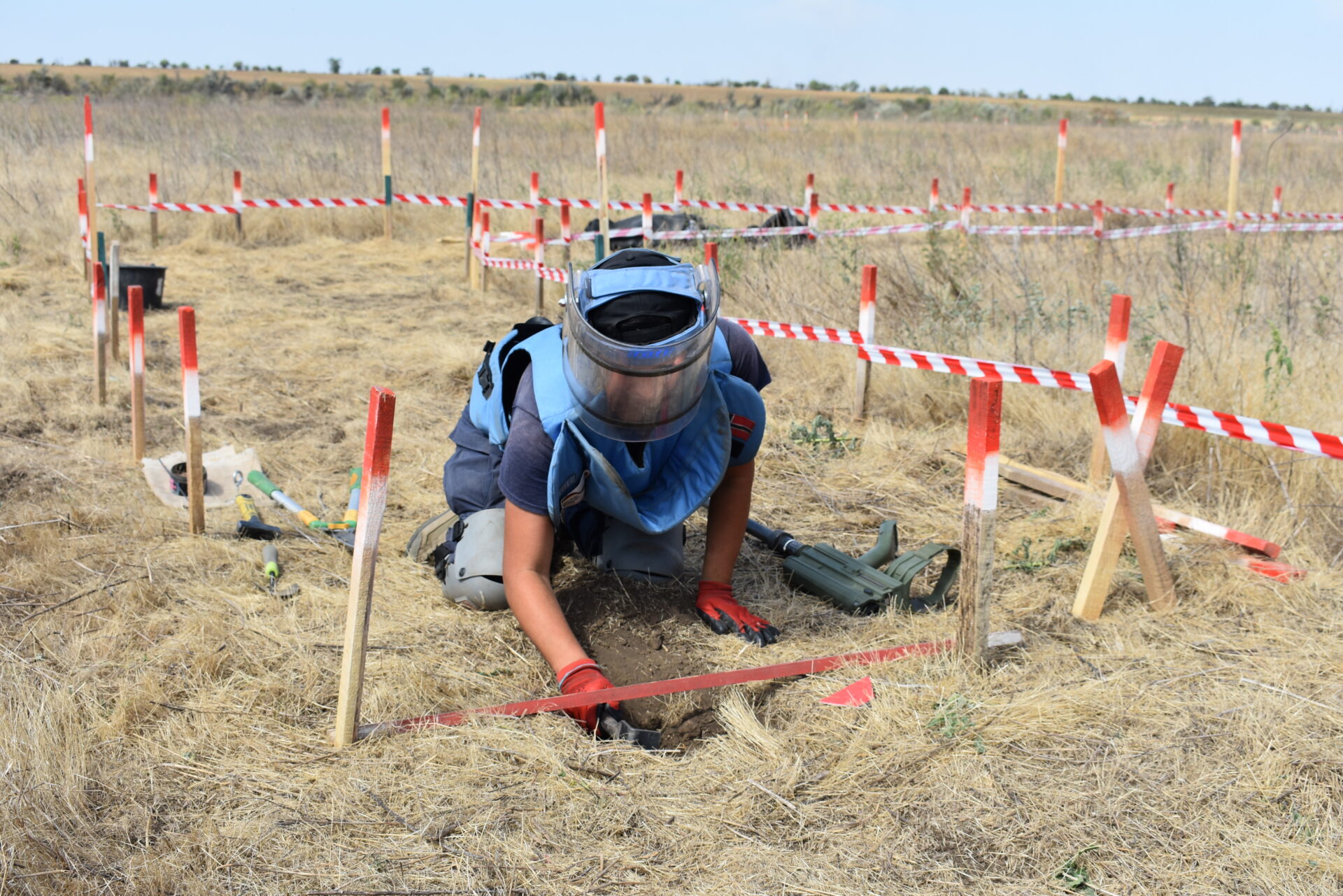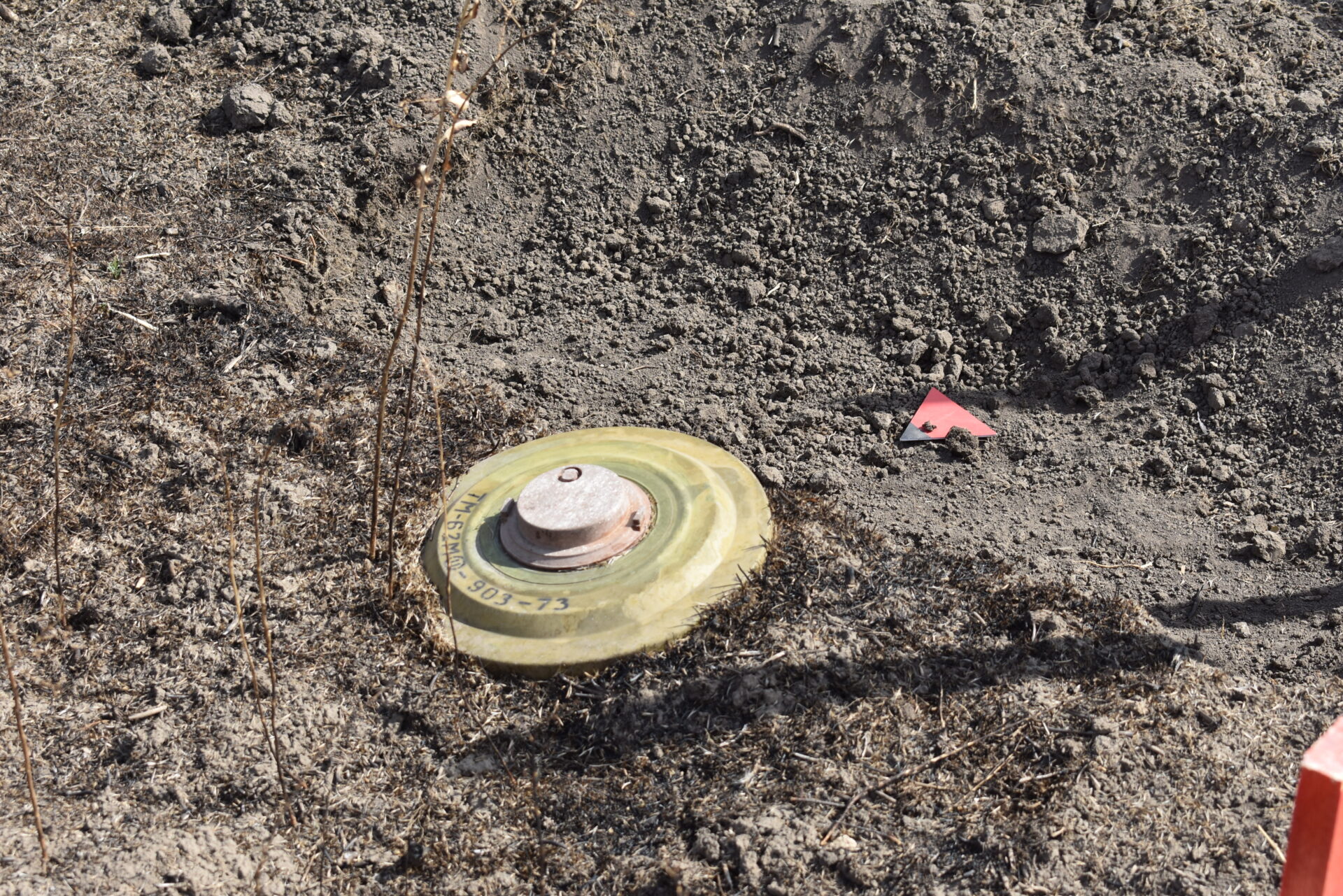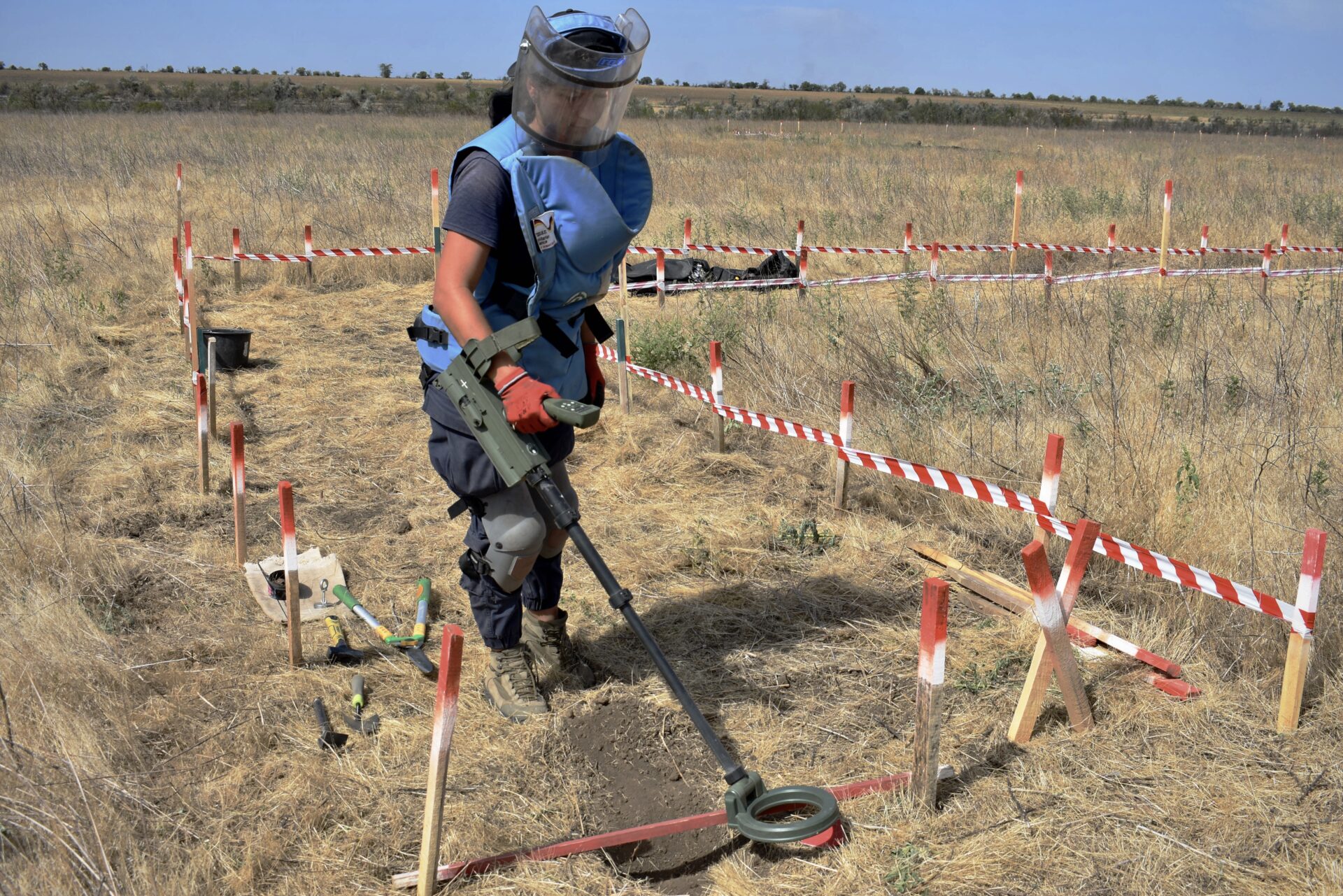In the Ukrainian countryside, between Mykolaiv and Kherson, the intense August heat gives the landscape a desert-like appearance. But this calm is deceptive—the land is littered with dozens of Russian TM-62 mines. Just two years ago, these wheat fields were the front line, separating Ukrainian forces in the west from Russians in the east.
A silhouette emerges from the tall grass just a few meters from a dusty road. It’s Tatyana*. At 34, this mother and former employee of Mykolaiv’s civilian airport is now a deminer. For the past two months, she has been employed by the Norwegian People’s Aid (NPA), a major global demining organization.
In the morning, Tatyana doesn’t have time to say goodbye to her two children. The convoys of deminers leave the headquarters in central Mykolaiv at 7:00 AM. During the summer, to avoid the 100°F afternoon heat, they work in the field from 8 AM to 2 PM. “The hardest part of this job? Being out in the sun with a visor and a heavy vest,” Tatyana jokes.
Originally from Donbas, Tatyana has known war for 10 years, since Russian troops invaded in 2014. For her, this demining mission is a way to contribute to the war effort against Russia: “I want my children to grow up in a normal country,” she says, putting away her metal detector. In 2015, she said she and her family narrowly escaped a Russian BM-21 rocket launcher attack in Donetsk.
























